ChatGPT:
Lanzarote, one of the Canary Islands located off the coast of West Africa, is part of Spain. It’s known for its unique volcanic landscape, with extensive lava fields, craters, and unusual rock formations. The island’s Timanfaya National Park showcases these geological wonders and is a major attraction.
Lanzarote enjoys a mild, subtropical climate, making it a year-round destination. The island also boasts beautiful beaches, such as Playa Blanca and Papagayo, with clear waters ideal for swimming and water sports.
César Manrique, a renowned local artist and architect, significantly influenced Lanzarote’s development, promoting sustainable tourism and blending modern architecture with the natural environment. His works, like the Jameos del Agua and Mirador del Río, are popular tourist spots.
Lanzarote’s geological history is marked by its volcanic origins, which have shaped its dramatic landscape over millions of years. The island emerged from the Atlantic Ocean approximately 15 million years ago due to volcanic activity associated with the Canary hotspot.
Key geological features and history include:
Volcanic Activity
- Early Formation: The island’s initial formation involved underwater volcanic eruptions, which gradually built up layers of basaltic rock. Over time, these eruptions broke the surface of the ocean, forming the island.
- Eruptions of the 18th and 19th Centuries: Significant volcanic activity occurred between 1730 and 1736, known as the Timanfaya eruptions. These eruptions transformed a quarter of the island, creating extensive lava fields, over 100 new volcanic cones, and other pyroclastic formations. Another notable eruption occurred in 1824, further altering the landscape.
Notable Geological Features
- Timanfaya National Park: This area, also called the “Mountains of Fire,” is characterized by its otherworldly landscape, with volcanic cones, lava fields, and geothermal phenomena. The park showcases the island’s volcanic heritage and is a protected area.
- La Geria: This unique wine-growing region features vineyards planted in volcanic ash, with individual vines protected by semicircular stone walls. This method conserves moisture and shields the vines from the wind.
- Cueva de los Verdes and Jameos del Agua: These are parts of an extensive lava tube system formed by the eruption of the Corona Volcano around 3,000-5,000 years ago. The lava tube is one of the longest in the world, and these sites offer a glimpse into the island’s subterranean volcanic activity.
- El Golfo: A striking green lagoon located within a volcanic crater, colored by algae and contrasting with the black sand and volcanic cliffs.
- Los Hervideros: Coastal cliffs formed by solidified lava where powerful waves crash against the rocks, creating dramatic sea caves and blowholes.
Lanzarote’s geological history is integral to its identity, offering a unique landscape that draws geologists, tourists, and nature enthusiasts.
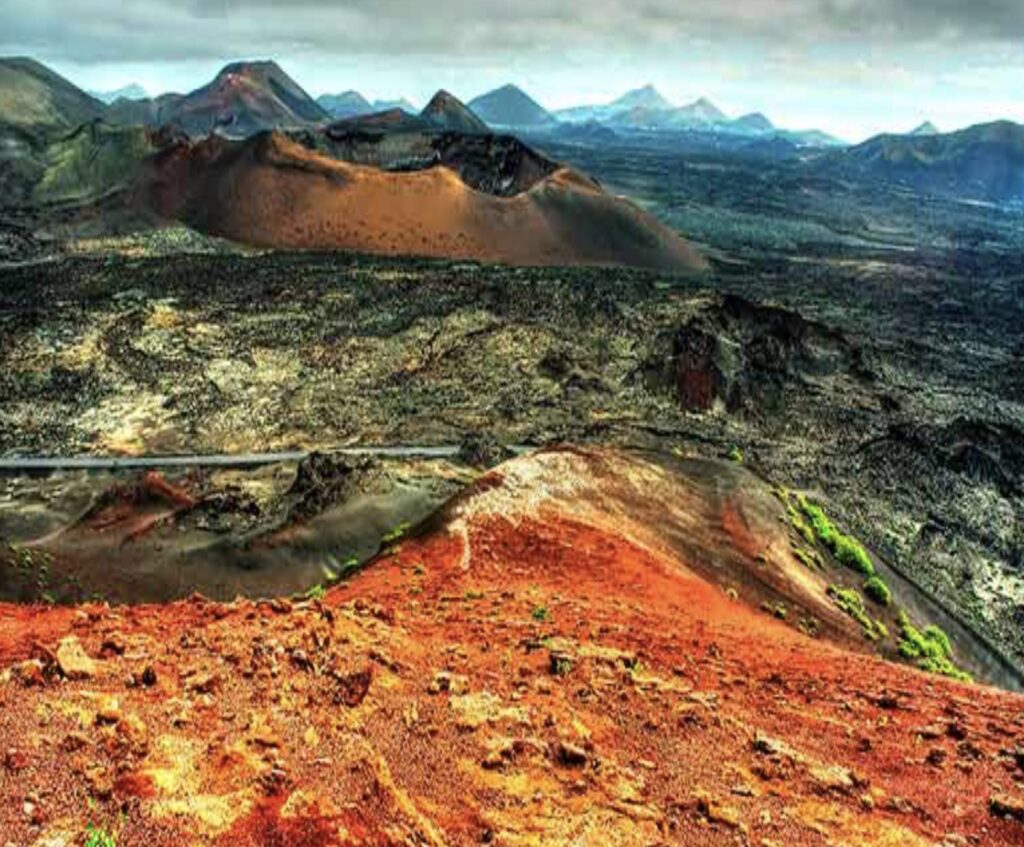
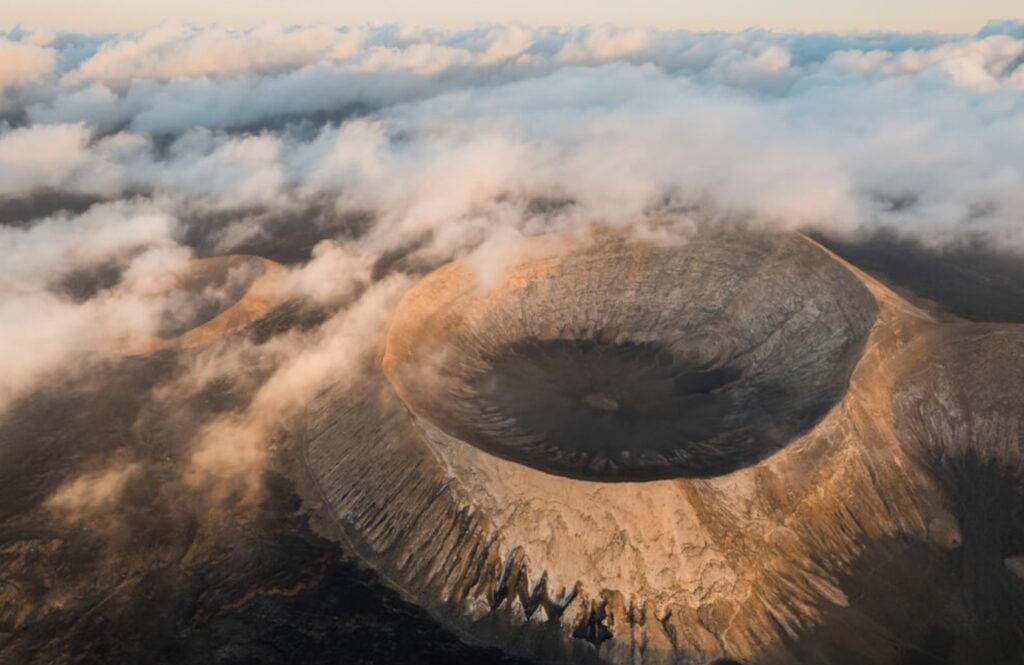
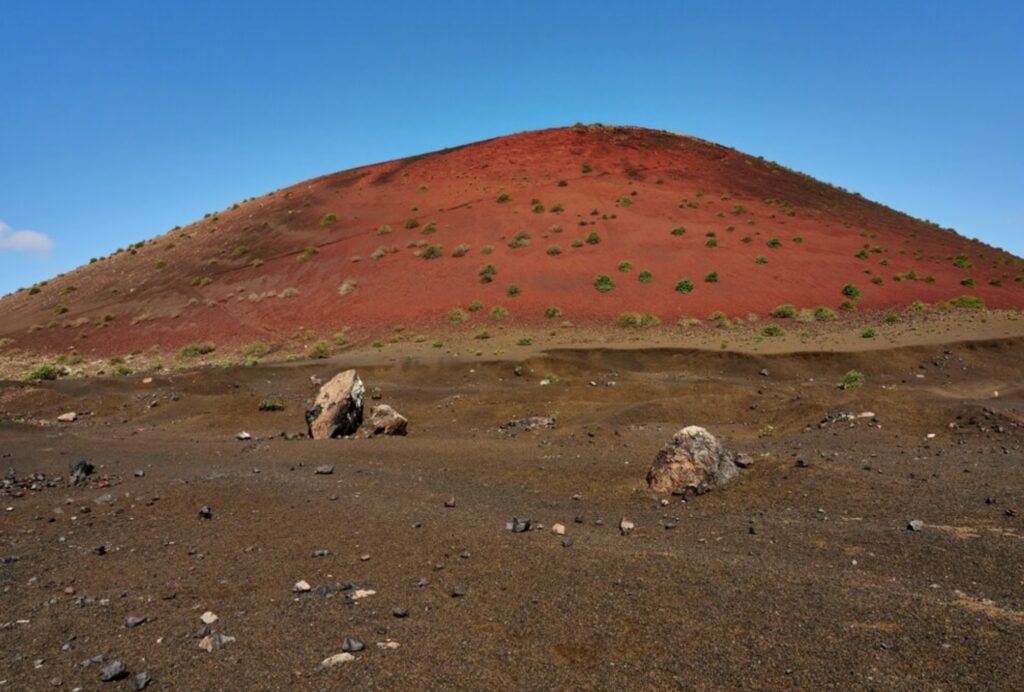
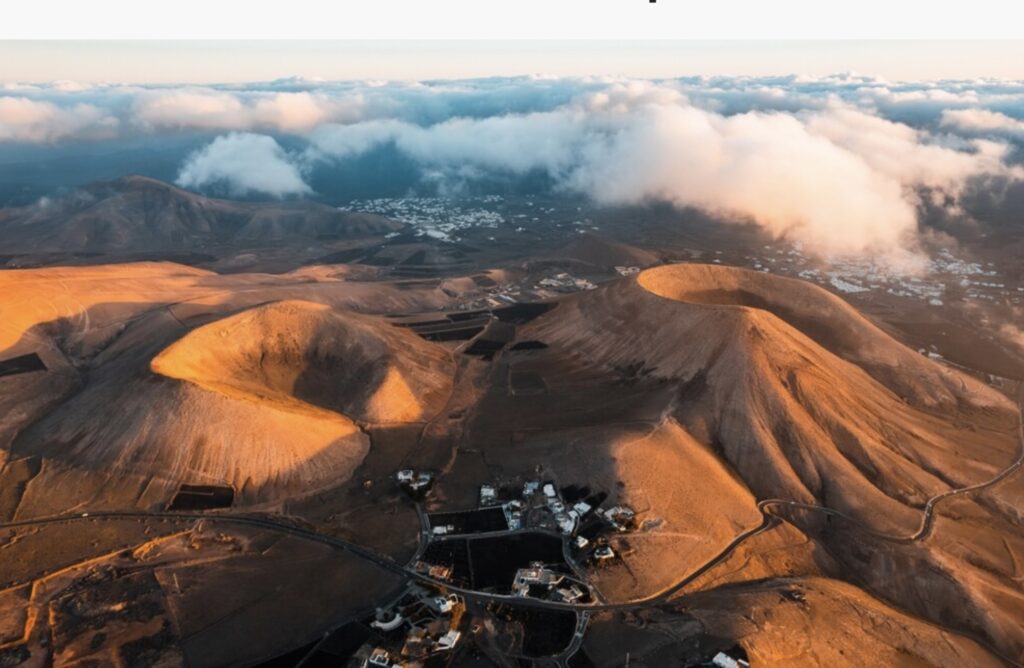
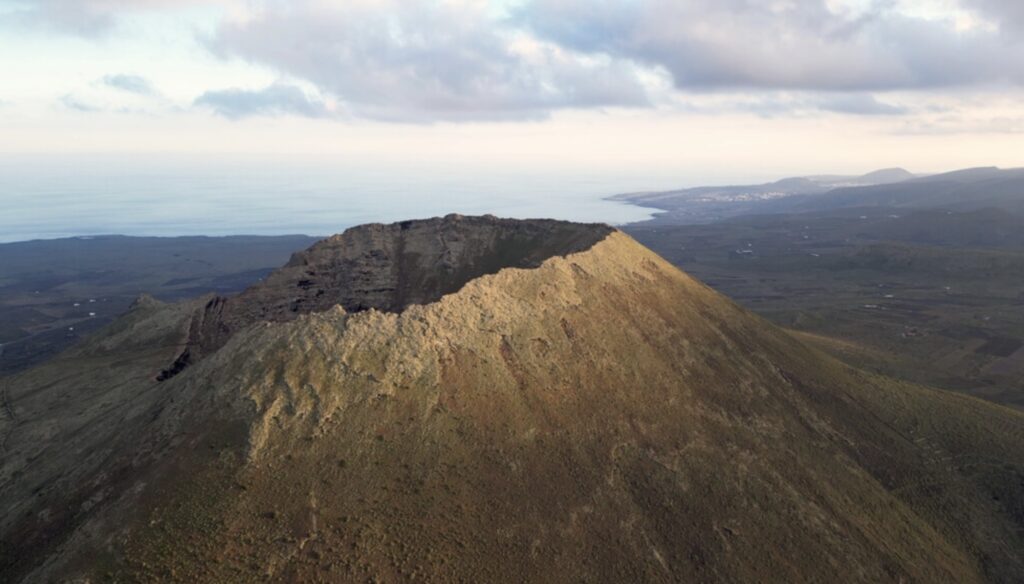
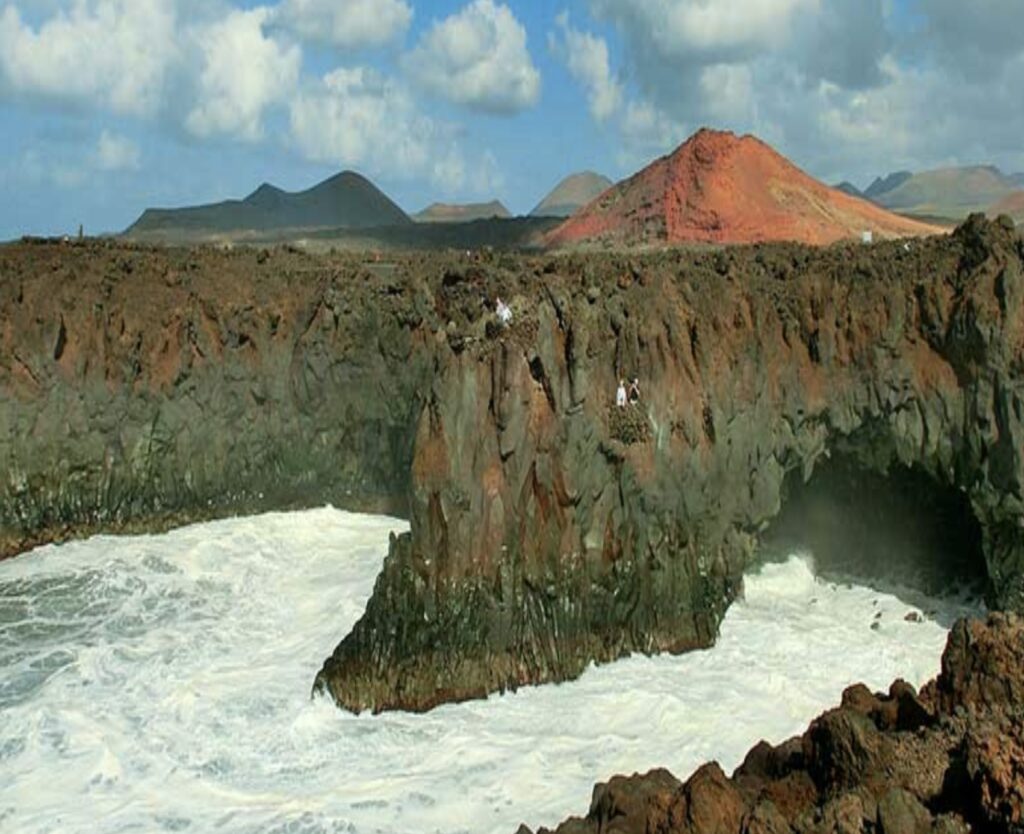
Lanzarote boasts a variety of interesting monuments and attractions, many of which highlight its unique volcanic landscape and the artistic influence of César Manrique. Here are some of the top attractions:
Natural Attractions
- Timanfaya National Park: Known as the “Mountains of Fire,” this park showcases dramatic volcanic landscapes with guided tours available to explore its geothermal phenomena.
- Jameos del Agua: A series of volcanic caves transformed by César Manrique into a stunning cultural and tourist center, featuring a natural lake, gardens, and an auditorium.
- Cueva de los Verdes: A spectacular lava tube that visitors can explore, offering insight into the island’s volcanic activity.
- El Golfo: A green lagoon within a volcanic crater, providing a striking natural contrast with its black sand and surrounding cliffs.
- Los Hervideros: Coastal cliffs where volcanic lava met the ocean, creating dramatic blowholes and sea caves.
Cultural and Artistic Attractions
- César Manrique Foundation: Located in Manrique’s former home, this foundation showcases his artwork and architectural contributions, blending modern design with natural elements.
- Mirador del Río: A viewpoint designed by César Manrique, offering breathtaking views over the island of La Graciosa and the surrounding ocean.
- Jardín de Cactus: A cactus garden designed by Manrique, featuring over 1,000 species of cacti set against a volcanic landscape.
- Monumento al Campesino: A monument dedicated to the island’s farmers, designed by Manrique, with a museum showcasing traditional agriculture and crafts.
Historical Sites
- Castillo de San José: An 18th-century fortress now housing the International Museum of Contemporary Art, featuring works by Spanish and international artists.
- Castillo de San Gabriel: A historic castle in Arrecife, originally built to defend against pirate attacks, now a cultural and historical site.
- Teguise: The former capital of Lanzarote, Teguise is a charming town with cobbled streets, historical buildings, and a vibrant Sunday market.
Beaches and Outdoor Activities
- Playa de Papagayo: Renowned for its clear waters and golden sand, this beach is ideal for swimming and snorkeling.
- Playa Blanca: A popular resort area with beautiful beaches and a lively promenade.
- La Geria: The unique wine region where visitors can tour vineyards, taste local wines, and see traditional vine-growing techniques.
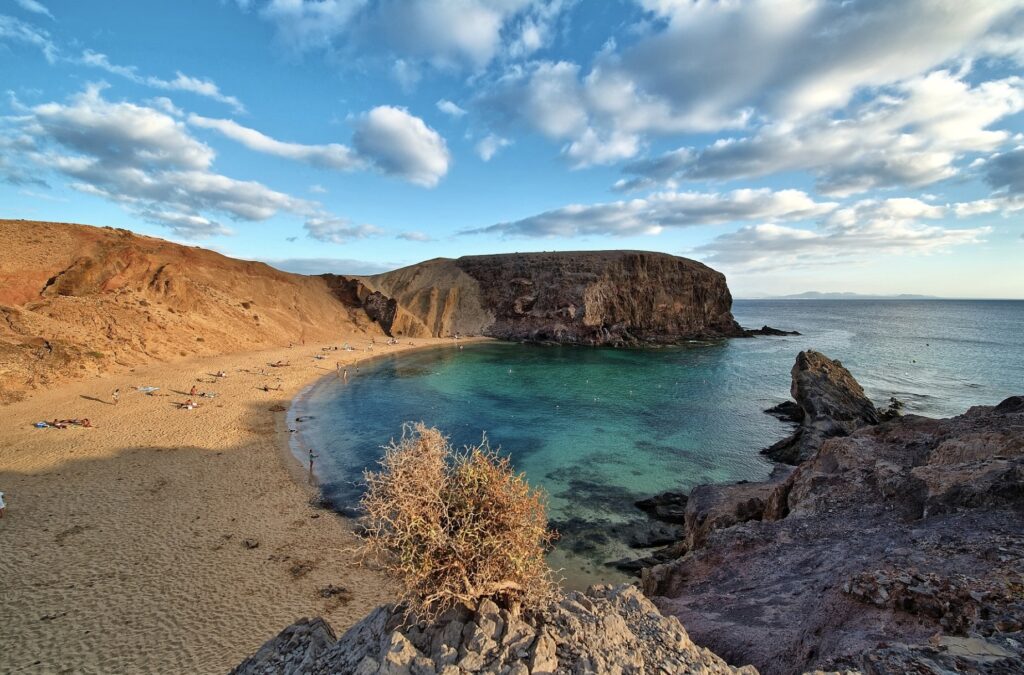
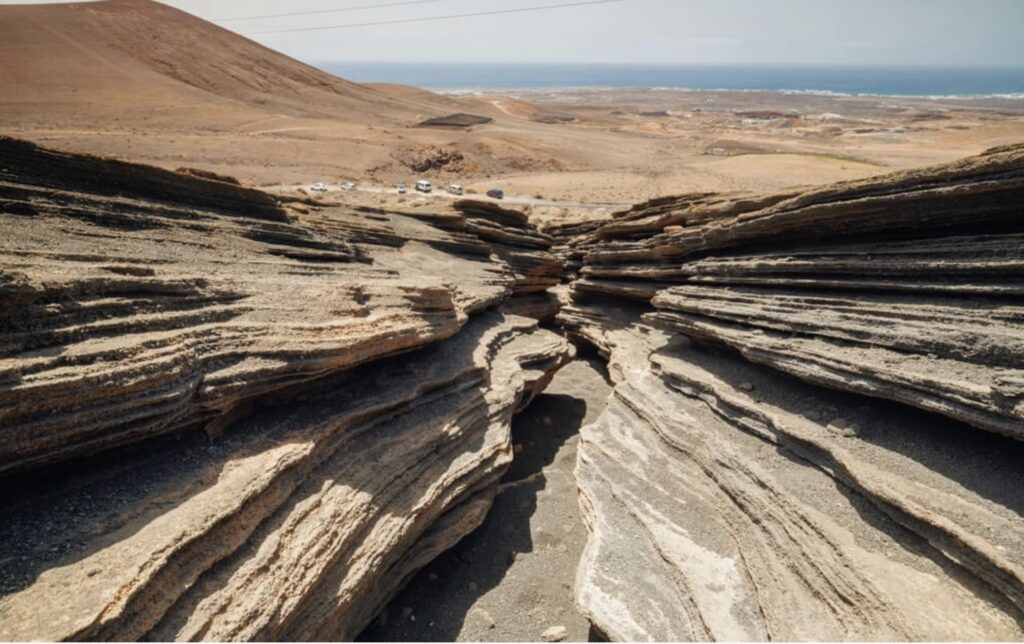
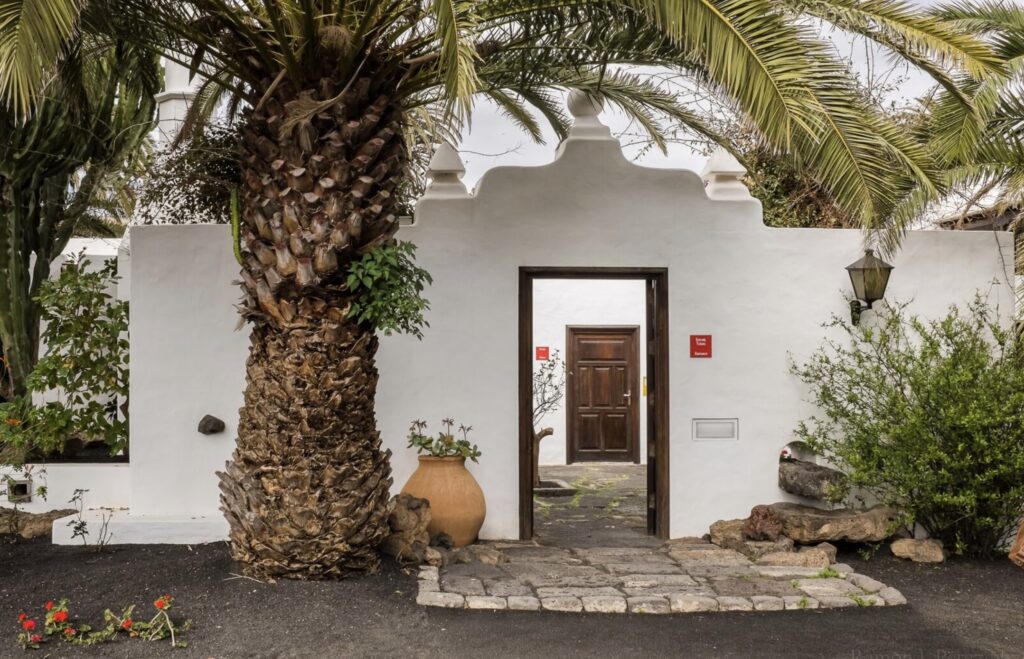
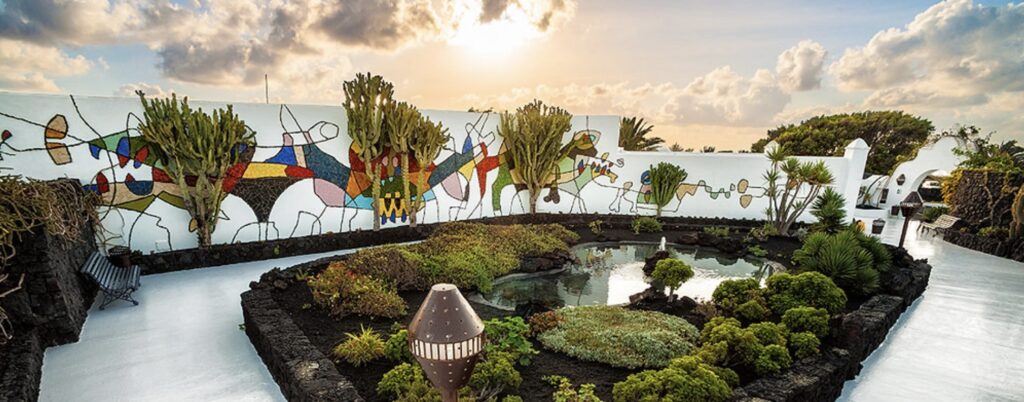
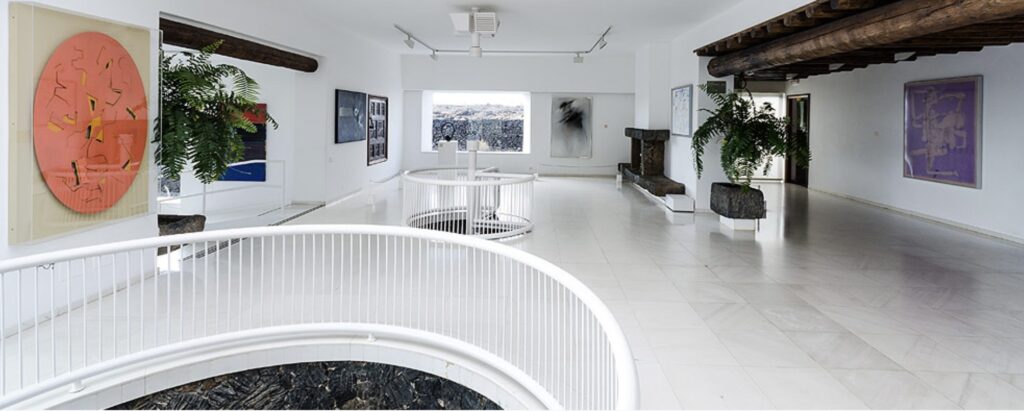
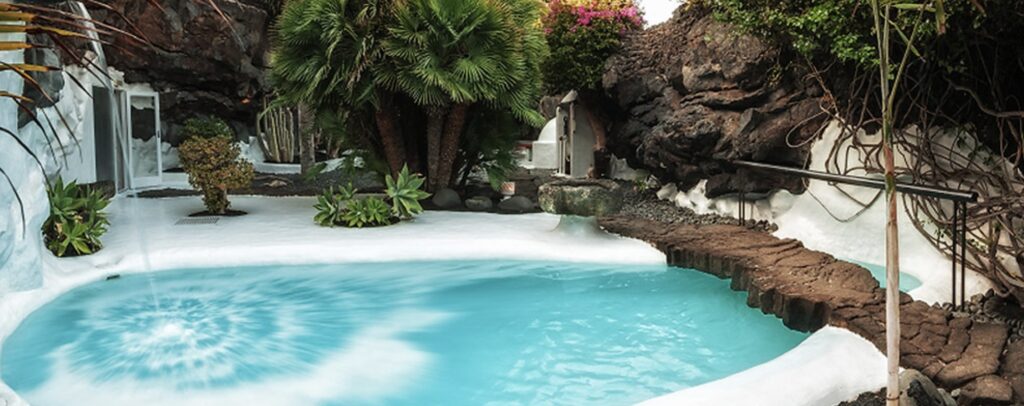
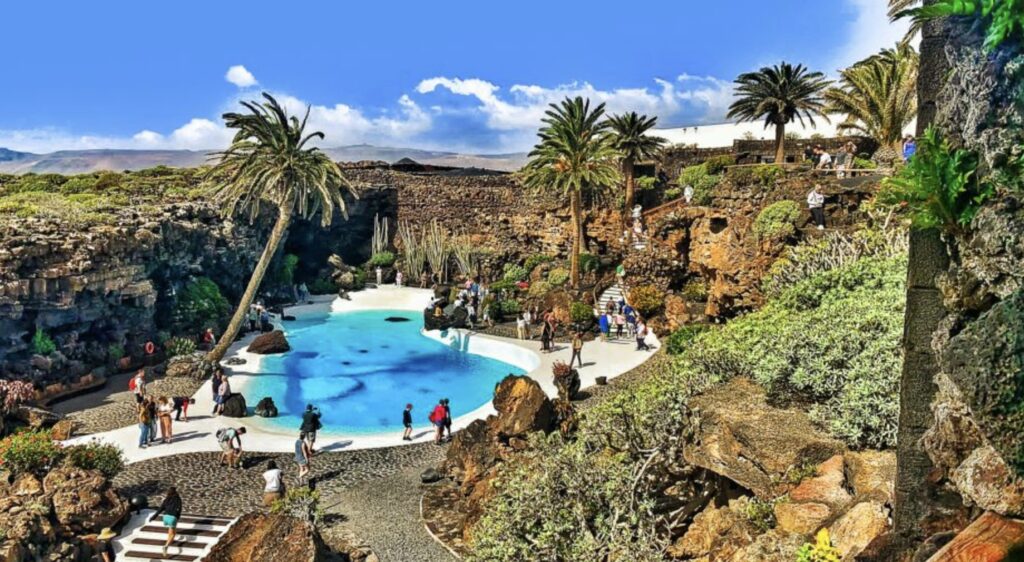
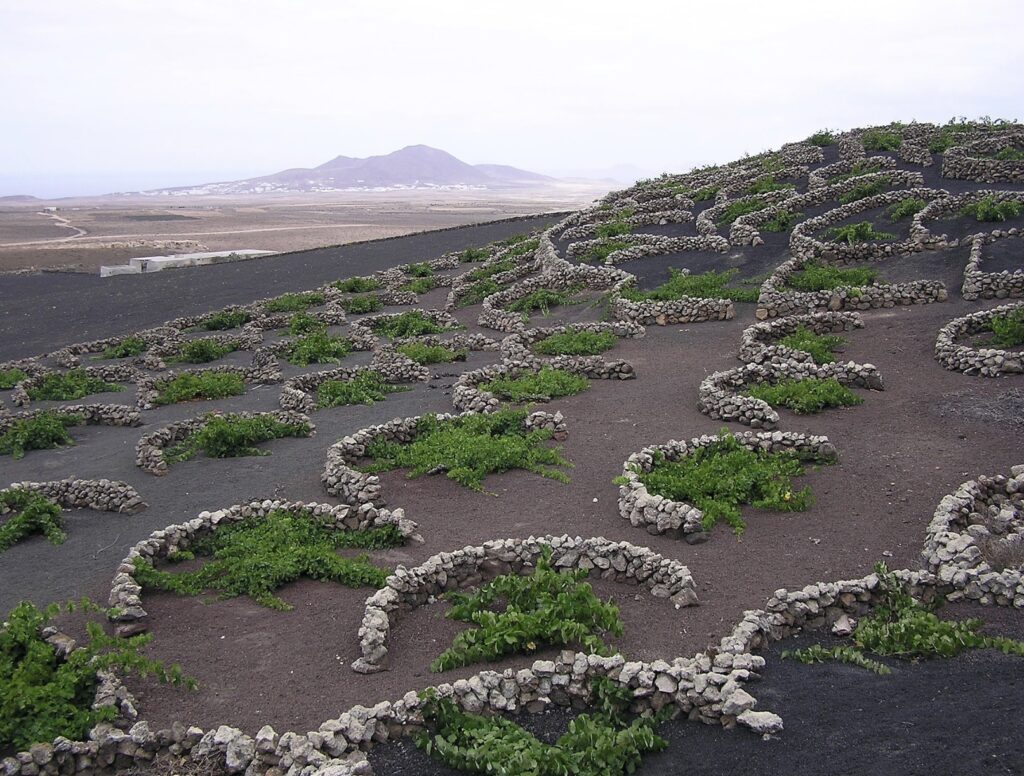
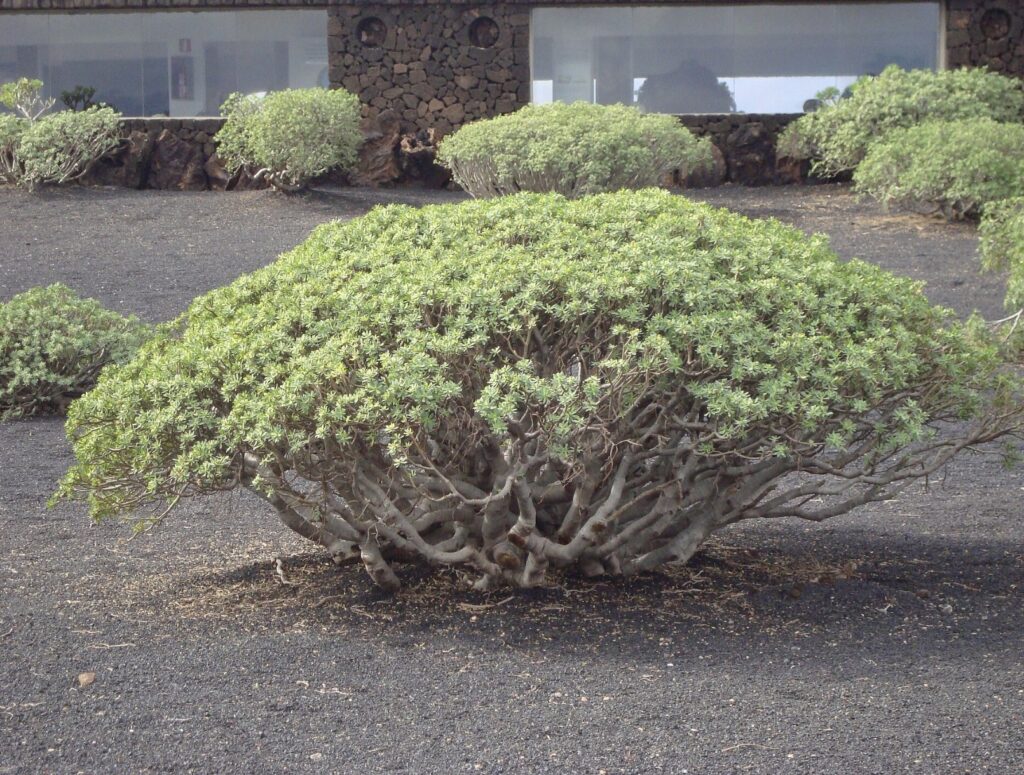
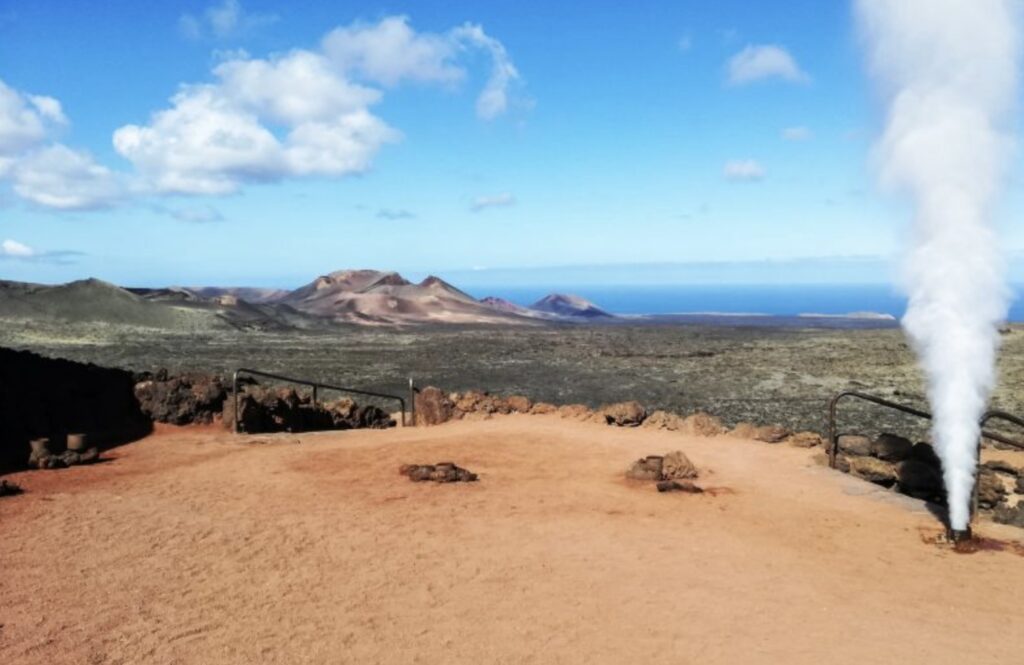
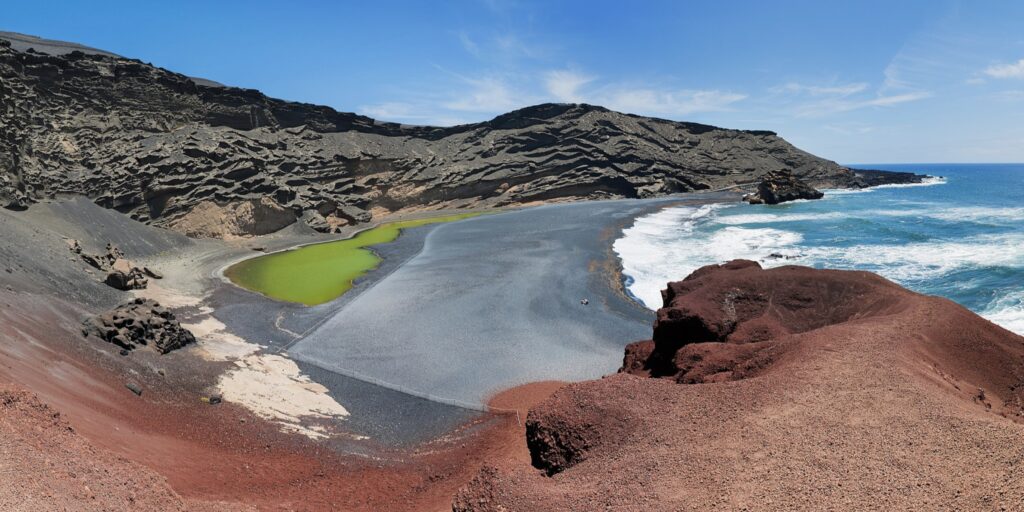
César Manrique (1919-1992) was a renowned Spanish artist, architect, and environmentalist from Lanzarote, one of the Canary Islands. His work profoundly influenced the island’s development and cultural identity, blending modern art with natural landscapes in a unique and sustainable manner.
Early Life and Education
Born in Arrecife, Lanzarote, Manrique showed an early interest in art. He studied at the San Fernando School of Fine Arts in Madrid, where he graduated in 1945. Afterward, he traveled and exhibited his works extensively, including a significant period in New York City, which exposed him to contemporary art movements.
Artistic Philosophy and Style
Manrique’s artistic philosophy was deeply rooted in his love for nature and his native island. He believed in harmonizing human creations with the natural environment, often incorporating natural elements like volcanic rock, caves, and coastal landscapes into his works. His style is characterized by organic forms, fluid lines, and a seamless integration of architecture and nature.
Major Contributions and Projects
- Jameos del Agua: A series of volcanic caves transformed into a cultural and tourist center with a natural lake, gardens, and an auditorium, exemplifying Manrique’s blend of art and nature.
- Cueva de los Verdes: Another volcanic cave system adapted for visitors, showcasing the island’s geological wonders.
- Mirador del Río: A viewpoint offering breathtaking views of La Graciosa island, designed with Manrique’s signature style of integrating structures into the natural landscape.
- Jardín de Cactus: A cactus garden featuring over 1,000 species of cacti, set against a dramatic volcanic backdrop.
- César Manrique Foundation: Located in his former home, this foundation preserves his artwork and architectural legacy, promoting sustainable development principles.
Environmental Advocacy
Manrique was a passionate advocate for environmental conservation and sustainable development. He opposed uncontrolled tourism and overdevelopment, promoting policies that preserved the island’s natural beauty and cultural heritage. His efforts led to regulations that limited high-rise buildings and billboards, ensuring Lanzarote retained its unique character.
Legacy
César Manrique’s legacy extends beyond his artistic contributions. He played a pivotal role in shaping Lanzarote’s identity as a model for sustainable tourism. His innovative approach to integrating art with the environment continues to inspire architects, artists, and environmentalists worldwide. Today, Lanzarote’s landscapes and cultural sites stand as a testament to his vision and dedication to harmonious coexistence with nature.
Lanzarote’s unique volcanic landscape has made it an attractive location for filmmakers, especially for scenes depicting otherworldly or alien environments. Here are some notable films that have used Lanzarote as a backdrop:
- “One Million Years B.C.” (1966):
- This classic prehistoric adventure film, starring Raquel Welch, used Lanzarote’s dramatic landscapes to depict a primitive and untamed world.
- “Doctor Who: The Enemy of the World” (1967):
- An episode of the popular British science fiction television series “Doctor Who” was filmed on Lanzarote, utilizing its stark landscapes to represent an alien environment.
- “Krull” (1983):
- This science fiction/fantasy film featured Lanzarote’s unique terrain to create the exotic and mystical world where the story takes place.
- “Enemy Mine” (1985):
- In this sci-fi film, Lanzarote’s rugged volcanic scenery stood in for a distant planet where the human protagonist and an alien form an unlikely friendship.
- “Journey to the Center of the Earth” (2008):
- The island’s landscapes were used to represent parts of the subterranean world discovered by the characters in this adventure film.
- “Broken Embraces” (2009):
- Directed by Pedro Almodóvar and starring Penélope Cruz, this film includes scenes shot in Lanzarote, showcasing its striking scenery.
- “Clash of the Titans” (2010):
- Some scenes of this fantasy film, which reimagines Greek mythology, were filmed in Lanzarote, taking advantage of the island’s dramatic natural formations.
- “The Book of Exodus: Gods and Kings” (2014):
- Directed by Ridley Scott, parts of this biblical epic were filmed on Lanzarote, using its stark landscapes to depict ancient Egypt and the Sinai desert.
- “Doctor Who: Kill the Moon” (2014):
- Another episode of “Doctor Who” was filmed in Lanzarote, this time using the island to represent the moon.
- “In the Heart of the Sea” (2015):
- This historical adventure film, directed by Ron Howard, included scenes shot on Lanzarote, portraying parts of the harsh and desolate oceanic landscapes.
Lanzarote offers a variety of local dishes that reflect its unique cultural heritage and island environment. Here are some special local foods you should try when visiting:
Main Dishes
- Papas Arrugadas (Wrinkled Potatoes) with Mojo Sauce:
- Small, unpeeled potatoes boiled in very salty water until wrinkled, typically served with mojo sauces. Mojo rojo (red) is made with red peppers and garlic, while mojo verde (green) is made with cilantro or parsley.
- Sancocho Canario:
- A traditional Canarian fish stew, usually made with salted fish, potatoes, sweet potatoes, and served with mojo sauce.
- Gofio:
- A type of flour made from roasted grains (usually maize or wheat) that is used in various dishes. It can be eaten mixed with milk for breakfast or incorporated into stews and desserts.
Seafood
- Caldereta de Pescado:
- A rich fish stew made with a variety of local fish, potatoes, and vegetables, often flavored with saffron and other spices.
- Pulpo a la Gallega:
- Although originally from Galicia, this dish of boiled octopus seasoned with olive oil, paprika, and salt is popular in Lanzarote.
- Sardinas Asadas:
- Grilled sardines, often served fresh from the local catch, seasoned simply with olive oil and salt.
Meats
- Cabrito:
- Roasted or stewed goat meat, which is tender and flavorful, often cooked with local herbs and spices.
- Conejo al Salmorejo:
- Rabbit marinated in a sauce made with garlic, paprika, and other spices, then slow-cooked until tender.
Sides and Snacks
- Queso de Cabra:
- Local goat cheese, often served fresh or aged, with a tangy and creamy texture.
- Ropa Vieja:
- A dish made from shredded beef or chicken, chickpeas, potatoes, and a tomato-based sauce.
Sweets and Desserts
- Bienmesabe:
- A sweet dessert made from ground almonds, honey, sugar, and eggs, often served with ice cream or as a filling for pastries.
- Frangollo:
- A traditional dessert made from maize flour, milk, sugar, lemon zest, and sometimes raisins and almonds.
Beverages
- Vino de Lanzarote:
- Lanzarote produces unique wines, particularly from the La Geria region, where vines are grown in volcanic soil. Malvasía is a notable variety, producing both dry and sweet wines.
- Ron Miel:
- Honey rum, a sweet liqueur that is a popular digestif in the Canary Islands.
These dishes and beverages offer a taste of Lanzarote’s culinary traditions, influenced by its volcanic environment and maritime culture.
Two-Day Itinerary for Lanzarote
Day 1: Exploring the Northern and Central Regions
Morning:
- César Manrique Foundation:
- Start your day at the César Manrique Foundation in Tahiche. Explore the artist’s former home and studio, which showcases his works and architectural style.
- Jameos del Agua:
- Head to Jameos del Agua, a unique cultural center built within a volcanic cave. Enjoy the subterranean lake, gardens, and café.
Lunch:
- Have lunch at a local restaurant near Jameos del Agua or in the nearby town of Punta Mujeres.
Afternoon:
- Cueva de los Verdes:
- Visit Cueva de los Verdes, a stunning lava tube formed by volcanic activity. Take a guided tour to learn about its geological significance.
- Mirador del Río:
- Drive to Mirador del Río, a viewpoint designed by César Manrique. Enjoy panoramic views of the island of La Graciosa and the surrounding ocean.
Evening:
- Haría:
- Spend the evening in the picturesque village of Haría. Stroll through the town, visit local artisan shops, and enjoy a leisurely dinner at a local restaurant.
Day 2: Discovering the Southern and Western Regions
Morning:
- Timanfaya National Park:
- Start your day with a visit to Timanfaya National Park. Take a guided tour or bus ride through the “Mountains of Fire” to witness the dramatic volcanic landscapes and geothermal demonstrations.
Lunch:
- Enjoy lunch at the park’s restaurant, El Diablo, which uses geothermal heat to cook food.
Afternoon:
- El Golfo and Los Hervideros:
- Visit El Golfo, a green lagoon set within a volcanic crater, and then head to Los Hervideros to see the dramatic coastal cliffs and sea caves formed by solidified lava.
- La Geria Wine Region:
- Explore La Geria, the unique wine region of Lanzarote. Visit a bodega (winery) to learn about the traditional vine-growing techniques and sample local wines.
Evening:
- Playa Blanca:
- Spend the evening in Playa Blanca, a popular resort town. Relax on the beach, stroll along the promenade, and have dinner at one of the many seaside restaurants.
- Sunset at Papagayo Beach:
- If time allows, catch the sunset at Papagayo Beach, known for its clear waters and stunning views.
Additional Tips:
- Transportation: Renting a car is the most convenient way to explore the island.
- Timing: Start your days early to make the most of your time and avoid crowds at popular sites.
- Reservations: For dining and guided tours, consider making reservations in advance, especially during peak tourist seasons.
This itinerary offers a balanced mix of natural beauty, cultural experiences, and relaxation, showcasing the best of Lanzarote in two days.
